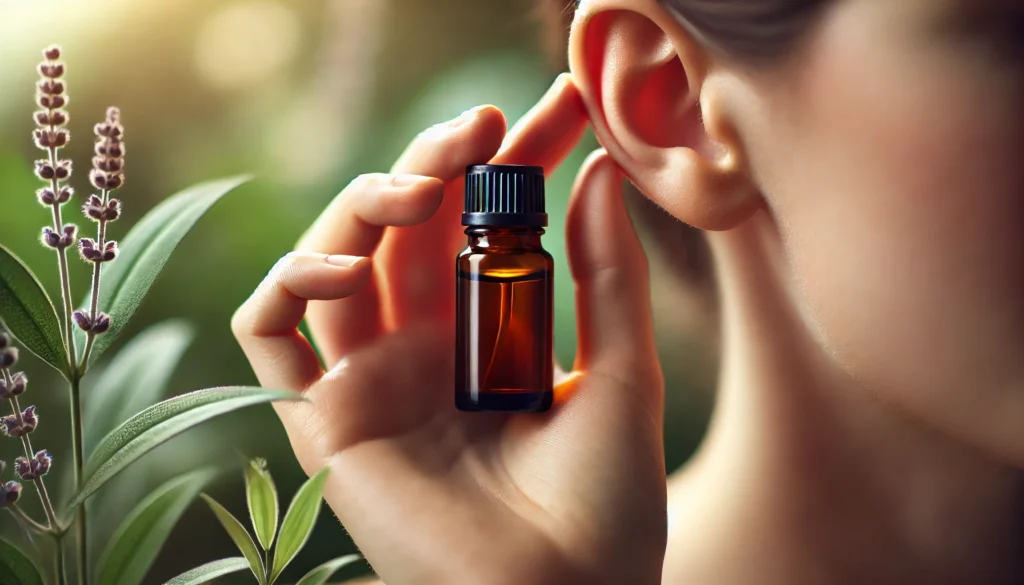In today’s increasingly complex and hyperconnected world, where smartphones, social media notifications, and multitasking have become the norm, the ability to maintain clear focus and consistent mental clarity is more valuable than ever before. The modern lifestyle, though full of convenience and efficiency, often results in fragmented attention and cognitive fatigue. For students juggling coursework, professionals navigating tight deadlines, and even retirees seeking mental engagement, the pursuit of improved concentration has become universal. Against this backdrop, a holistic and time-honored remedy is regaining the spotlight: the focus essential oil blend. This curated mixture of botanically derived essential oils isn’t just a fleeting wellness trend—it represents a growing synthesis of ancient herbal wisdom and contemporary neuroscience. Designed to enhance attention, elevate mood, and anchor mindfulness, this blend has become an accessible cognitive tool. Yet, the real question remains: how does focus oil actually work, and where should it be applied to harness its full potential?
You may also like: How to Improve Focus and Concentration: Proven Techniques for Boosting Mental Clarity and Productivity

Understanding the Science Behind Focus Essential Oil Blend
Focus essential oil blend typically features a harmonious mix of essential oils renowned for their nootropic properties. Common components include rosemary, peppermint, lemon, basil, frankincense, and sometimes cedarwood or eucalyptus. Each of these plant extracts has unique phytochemical profiles that support cognitive function. Rosemary oil, long studied for its memory-enhancing effects, has been shown to increase mental alertness and improve memory recall. Peppermint, with its invigorating menthol content, helps awaken the senses and cut through mental fog. Lemon oil’s bright, citrusy aroma is not only uplifting but has also been linked to increased accuracy and focus in mental tasks. Basil and frankincense support neurochemical balance and help maintain calm during high-stress cognitive challenges.
Scientific literature continues to affirm the benefits of essential oils for cognitive performance. Inhaling or topically applying focus oil stimulates key brain regions, particularly the limbic system, which governs memory, mood, and emotional regulation. The activation of olfactory receptors in the nasal cavity sends immediate signals to this emotional brain, leading to the release of neurotransmitters like dopamine, serotonin, and acetylcholine. These chemicals are crucial for staying motivated, feeling emotionally grounded, and enhancing working memory and mental flexibility.
Notably, combining multiple essential oils into a single blend creates a synergistic effect. In this ensemble, the components amplify one another’s cognitive impact, enabling a broader spectrum of benefits than single oils alone. This synergy reflects a holistic approach to brain health—one that values balance and integration over isolated compounds. While a single oil like rosemary can improve recall, its effectiveness can be enhanced by pairing it with oils that calm the nervous system or stimulate dopamine, creating a balanced state of relaxed alertness. This multidimensional effect aligns well with both integrative medicine and neuropsychological principles.
Why Application Location Matters: The Role of Skin Absorption and Olfactory Pathways
The route of administration significantly influences the effects of the focus essential oil blend. To fully benefit from the blend’s therapeutic potential, understanding where to rub focus essential oil becomes a central part of the practice. Essential oils penetrate the body through both the skin and the respiratory system. When massaged onto specific pulse points, these oils are absorbed into the bloodstream due to the high vascular density in these areas. This direct route allows the active compounds to circulate quickly throughout the body, reaching the brain and other target systems.
Simultaneously, the olfactory pathway offers another potent mechanism for delivery. Inhalation of essential oils sends scent molecules directly to the brain’s limbic system via the olfactory bulb. This process is faster and more targeted than many pharmacological interventions. For example, inhaling peppermint or rosemary oil can trigger near-instantaneous changes in mood and alertness. These dual pathways—cutaneous absorption and olfactory transmission—make essential oils uniquely effective compared to other wellness interventions.
The application also offers psychological benefits, especially when performed mindfully. The physical act of rubbing oil into your temples or wrists can become a grounding ritual that transitions the mind from distraction to focus. This sensory engagement taps into the parasympathetic nervous system, activating a state of calm concentration. When this practice becomes habitual, it anchors intention and creates a neural association between the oil’s scent and a state of mental readiness. This phenomenon, rooted in behavioral psychology, allows the oil to act as both a biochemical agent and a cognitive cue.
Best Places to Apply Focus Essential Oil for Enhanced Concentration
The strategic application enhances both the absorption and efficacy of the focus essential oil blend. Among the most effective sites are the temples. This area is located close to major arteries and nerve centers, enabling fast transdermal delivery. When gently massaged, the oil not only penetrates the skin but also provides direct stimulation to surrounding cranial muscles, reducing tension that might otherwise impede concentration. Applying focus oil to the temples is especially helpful before reading, studying, or detailed analytical work.
The inner wrists are another powerful site. With their thin skin and close proximity to veins, wrists allow for fast entry into the circulatory system. Additionally, wrists are involved in frequent motion, which subtly releases the oil’s aroma throughout the day. This slow diffusion prolongs the aromatherapeutic effect, making it a discreet yet effective option for professionals in meetings or students in classrooms. Frequent wrist application also reinforces the mental association between the scent and focused work.
The area behind the ears is ideal for combining olfactory access with warmth-driven absorption. This region is often overlooked, yet it is sensitive and adjacent to the respiratory pathway. Because it is warm, the oil volatilizes efficiently and releases an aroma that naturally drifts toward the nose. This spot is particularly effective before video calls, exams, or any context where both clarity and composure are required. It can also serve as a subtle, pleasant personal fragrance with therapeutic undertones.
Rubbing the oil on the chest or upper sternum creates a full-body sensory effect. As the oil evaporates, it rises toward the nose, allowing for consistent inhalation. When paired with deep breathing exercises or meditative practices, this method enhances the mind-body connection. Applying oil to the chest before yoga, stretching, or breathwork adds a layer of intention and sensory reinforcement to mindfulness.
The soles of the feet, while not typically associated with olfaction, are surprisingly effective for systemic absorption. They contain larger pores and fewer sebaceous glands, which facilitates fast transdermal absorption. Moreover, many traditional healing systems, including reflexology and traditional Chinese medicine, consider the feet as key energetic gateways. Applying oil to the feet at night supports overnight cognitive recovery and emotional balance, preparing the mind for the next day’s focus challenges.
How Focus Oil Works: From Aromatherapy to Neurobiology
Understanding how oil works requires exploring its effects on both the chemical and electrical systems of the brain. Aromatherapy is often dismissed as mere scent therapy, but research into essential oils reveals a complex interplay between their volatile compounds and neural pathways. Essential oils activate olfactory neurons that connect directly to the limbic system—an area of the brain linked to memory, learning, and emotional processing. Unlike other sensory inputs, olfactory signals bypass the thalamus and create immediate effects on mood and cognition.
Rosemary and peppermint, in particular, contain compounds that inhibit enzymes like acetylcholinesterase. This enzyme is responsible for breaking down acetylcholine, a neurotransmitter critical for sustained attention and memory formation. By preserving acetylcholine levels, these oils allow for longer periods of cognitive engagement. Lemon oil and basil, on the other hand, are linked to increased dopamine and norepinephrine activity, both of which enhance motivation and mental energy.
Moreover, essential oils may influence brain wave activity. EEG studies have demonstrated that oils such as lavender and rosemary can increase alpha and beta wave activity. Alpha waves are associated with relaxed alertness, while beta waves reflect heightened focus and active problem-solving. This pattern of brain activity is particularly desirable for those seeking to enter flow states—periods of deep immersion and peak productivity.
In addition to neurochemical effects, there is evidence that essential oils influence cortisol levels and the overall stress response. Reducing mental noise caused by stress hormones allows the brain’s prefrontal cortex to operate more efficiently. This region is responsible for executive function, decision-making, and long-term planning. Thus, focus oil works not just by stimulating the brain but by balancing it.

Practical Tips for Incorporating Focus Essential Oil Blend into Your Routine
Using Focus essential oil blend effectively involves more than just sporadic application—it’s about developing a conscious routine that supports mental health and cognitive agility. Begin by selecting a reputable brand that emphasizes quality, sustainability, and scientific validation. Look for therapeutic-grade certifications, third-party lab tests, and transparency about sourcing. This ensures that your blend is free of synthetic fillers and contains the active compounds needed for true efficacy.
In the morning, set a daily intention before applying the oil to pulse points such as your temples, wrists, or behind the ears. Inhale deeply, holding your breath for a few seconds before exhaling slowly. This mini-regime can serve as a cognitive primer, setting the tone for focused productivity. Reapply as needed, especially before cognitively demanding tasks or when experiencing mental fatigue. Keep a roller bottle in your bag, car, or workspace for convenience.
Pairing focus oil with specific behaviors helps build consistent cognitive cues. Apply it before writing sessions, strategic planning, or any task that requires deep thought. This consistency creates a scent-driven trigger that guides your brain into focus mode. Over time, the oil becomes an anchor that helps you shift quickly from distraction to engagement.
Integrating essential oil use into physical practices such as yoga, tai chi, or even simple breathwork enhances the mind-body connection. Rub a few drops on your chest or palms, then inhale deeply before a session. This sensory layer deepens the practice and reinforces emotional stability alongside mental sharpness.
Evening use also has its place. Apply the blend to your feet, chest, or back of the neck to facilitate cognitive recovery. While the oil stimulates alertness during the day, it can also soothe overstimulated neural pathways when used intentionally in a wind-down routine. This versatility makes it an excellent all-day companion for those balancing demanding schedules.
The Psychological Power of Ritual and Scent Memory
One of the most intriguing aspects of using a focus essential oil blend is the psychological phenomenon known as scent association. Our brains create strong memories tied to smell, which can be leveraged to build habits that support mental performance. By using the same scent blend before focus-related tasks, the brain begins to associate that scent with productivity and clarity. This process is known as olfactory conditioning.
Over time, simply smelling the focus oil—regardless of the context—can bring about the mental state originally linked to it. This effect strengthens with consistency. It is similar to how a particular song might evoke memories or emotions from a specific time in your life. When combined with mindfulness, the act of applying oil becomes more than a wellness habit; it becomes a cognitive anchor.
These rituals can be woven seamlessly into your daily life. Apply oil before opening your computer, starting a challenging book, or engaging in a brainstorming session. Small, repeatable actions become powerful cues that align your mental state with your goals. In a world of endless distractions, such rituals help re-center the mind and reduce cognitive switching costs.

Frequently Asked Questions (FAQ) – Focus Essential Oil Blend for Concentration
1. Can focus essential oil blend be used during high-pressure situations like public speaking or exams?
Absolutely. Many users report that applying a focus essential oil blend before high-stress events like public speaking, exams, or important presentations helps calm the nerves while enhancing cognitive clarity. The blend’s aromatic compounds interact with the limbic system, modulating the body’s stress response while also supporting sustained focus. For best results, apply the oil behind the ears or on the chest 10–15 minutes beforehand and practice deep breathing. The act of focusing on scent also serves as a grounding anchor, helping speakers stay present and reducing racing thoughts.
2. Is there a difference between applying focus oil in the morning versus the afternoon?
Yes, timing can influence how the body responds to a focus essential oil blend. In the morning, applying focus oil may promote wakefulness and set the tone for a mentally organized day. In the afternoon, especially during energy dips, reapplying the oil can reinvigorate mental clarity and help fight fatigue without the need for stimulants. Strategically planning where to rub focus essential oil—such as on pulse points when you wake up and temples during your midday slump—can provide consistent cognitive support throughout the day. This practice aligns the blend with your body’s natural circadian rhythms.
3. Can focus essential oil blend support long-term cognitive health, or is it only for short-term benefits?
While focus oil is often used for immediate concentration, its long-term potential should not be overlooked. Many of the ingredients in a high-quality focus essential oil blend—such as rosemary and frankincense—have antioxidant and neuroprotective properties that may support long-term brain health. Regular use, especially in combination with mindfulness and cognitive training, may help improve emotional regulation and attention span over time. Consistency in where to rub focus essential oil, such as behind the ears or on the chest, can help integrate it into your wellness routine for preventative care. Although not a substitute for medical treatment, it may complement lifestyle strategies for cognitive longevity.
4. How can I incorporate focus oil into a study routine for children or teens?
Children and teens can benefit from the focus essential oil blend when used with adult supervision and in age-appropriate concentrations. Applying a small amount of diluted focus oil on the back of the neck or inside the wrists before homework time can create a sensory cue for learning. Pairing this with a study ritual, like a specific playlist or lighting condition, strengthens the association between scent and academic focus. Make sure to educate children on why and where to rub focus essential oil so they can develop their own mindful habits. Over time, this practice becomes a valuable tool for creating consistency in their learning environment.
5. Are there specific professions where focusing on essential oil blends is especially helpful?
Yes, professionals in high-cognitive-load environments—such as writers, software developers, therapists, educators, and air traffic controllers—often report benefits from regular use of focus oil. For example, a therapist might apply it before back-to-back sessions to maintain an emotional presence, while a developer may rub it on their wrists before entering deep work sessions. Knowing where to rub focus essential oil for your specific work conditions can enhance productivity without adding to sensory overload. Even healthcare workers and surgeons have used essential oils discreetly for stress reduction and mental clarity during long shifts. The adaptability of the Focus essential oil blend makes it a tool with cross-industry relevance.
6. What’s the relationship between scent-driven focus and habit formation?
Scent is deeply tied to memory and behavior through a process known as associative learning. When you use a focus essential oil blend in conjunction with a routine—such as beginning work or meditation—your brain begins to link the aroma with that focused state. Over time, simply smelling the focus oil can help trigger a shift in mental clarity and productivity. This psychological phenomenon adds a layer of habit reinforcement that goes beyond topical application. Knowing where to rub focus essential oil consistently allows the scent to become a reliable sensory cue in your behavioral toolkit.
7. Can focus oil be combined with other cognitive wellness strategies like nootropics or supplements?
Yes, the Focus essential oil blend can complement other cognitive-enhancing methods like nootropic supplements, brain-training apps, or mindfulness practices. It’s especially effective when layered into a multi-modal routine that supports both mind and body. For example, combining L-theanine with a focus oil application during study sessions can promote relaxed alertness, while using a meditation timer and aroma diffuser together helps reinforce mindfulness. Understanding where to rub focus essential oil—on the temples or neck, for instance—can create a synergistic effect with these tools. Always consult a healthcare provider before introducing multiple interventions, especially when supplements are involved.
8. How can I discreetly use focus essential oil blend in shared workspaces or public areas?
In shared environments, subtlety is key. Roll-on applicators allow you to apply the oil directly to pulse points like your inner wrists or collarbone area without disturbing those around you. Choosing a blend with a more neutral or citrus-forward scent can help prevent overpowering the room. When you’re mindful of where to rub focus essential oil, you can achieve the benefits of aromatherapy without compromising workplace etiquette. Portable diffuser jewelry, such as lava stone bracelets or lockets, also offers a personal diffusion option that stays within your scent bubble. These methods ensure discretion while still supporting focus.
9. Are there any emotional benefits to using focus oil alongside concentration support?
Yes, emotional regulation often improves as a secondary effect of using focus essential oil blend. Many users report feeling more grounded, emotionally stable, and less overwhelmed during demanding tasks. This may be due to the calming properties of certain ingredients like basil and frankincense, which help reduce stress reactivity. By paying attention to where to rub focus essential oil—particularly on areas close to the vagus nerve like behind the ears—you can enhance the emotional support aspect of its application. Emotional clarity often goes hand-in-hand with cognitive focus, making the blend a dual-purpose tool.
10. What does the future hold for essential oils and cognitive performance enhancement?
The field of aromachology—the study of how scents affect behavior—is growing rapidly, and focus essential oil blend is poised to be a part of this evolution. Emerging research suggests that personalized essential oil protocols based on genetic or neurobiological profiles may soon become standard in integrative health. Innovations in neuro-scent technology are already exploring how focus oil can be combined with wearable EEG devices to measure real-time brain wave responses. As we continue to discover where to rub focus essential oil for maximum bioavailability, targeted delivery methods may also become more sophisticated. This evolving landscape points toward a future where aroma-based focus tools are both customized and data-driven.
Conclusion: Unlocking Mental Clarity with Focus Essential Oil Blend
Harnessing the benefits of a focused essential oil blend is not just a passive experience—it is an intentional journey toward better mental clarity and cognitive empowerment. By learning where to rub focus essential oil and understanding the physiological and psychological reasons behind its effectiveness, you open yourself to a deeply integrated approach to productivity, calm, and resilience.
The blend works on multiple levels—chemical, neurological, emotional, and behavioral. It engages your senses, calms your nervous system, stimulates memory and focus, and creates rituals that tether your intentions to action. Through repeated, intentional use, focus oil becomes more than an aroma—it becomes a cue for your brain to awaken, align, and perform.
As we continue to explore and appreciate the links between scent, memory, and brain health, the use of a focus essential oil blend stands out as a profoundly effective tool for anyone seeking to enhance concentration. Whether applied to the temples before a big project, to the wrists during long meetings, or to the feet for overnight restoration, this botanical solution supports a long-term strategy for cognitive enhancement.
In the context of brain health, cognitive longevity, and the pursuit of mindful productivity, focus oil is not merely an indulgence—it’s a scientifically grounded, easily accessible means of elevating your mental edge. Use it wisely, use it consistently, and allow it to become a part of your ritualized path to optimized focus and lasting brain vitality.
natural remedies for concentration, essential oils for mental clarity, cognitive enhancement techniques, aromatherapy for focus, improving attention span naturally, herbal support for brain health, mindfulness and productivity, mental energy boosters, essential oils for students, holistic brain wellness, non-caffeine focus solutions, daily concentration rituals, enhancing memory with scents, stress management through aroma, natural cognitive support, scent-based productivity hacks, essential oils for work performance, herbal focus support for professionals, neuro aromatherapy practices, plant-based mental performance aids
Further Reading:
18 Essential Oils You Can Use to Boost Your Energy
Essential Oils for Focus & Concentration: How to Use them
Create an On-the-Go Roller Blend for Concentration
Disclaimer
The information contained in this article is provided for general informational purposes only and is not intended to serve as medical, legal, or professional advice. While Health11News strives to present accurate, up-to-date, and reliable content, no warranty or guarantee, expressed or implied, is made regarding the completeness, accuracy, or adequacy of the information provided. Readers are strongly advised to seek the guidance of a qualified healthcare provider or other relevant professionals before acting on any information contained in this article. Health11News, its authors, editors, and contributors expressly disclaim any liability for any damages, losses, or consequences arising directly or indirectly from the use, interpretation, or reliance on any information presented herein. The views and opinions expressed in this article are those of the author(s) and do not necessarily reflect the official policies or positions of Health11News.


